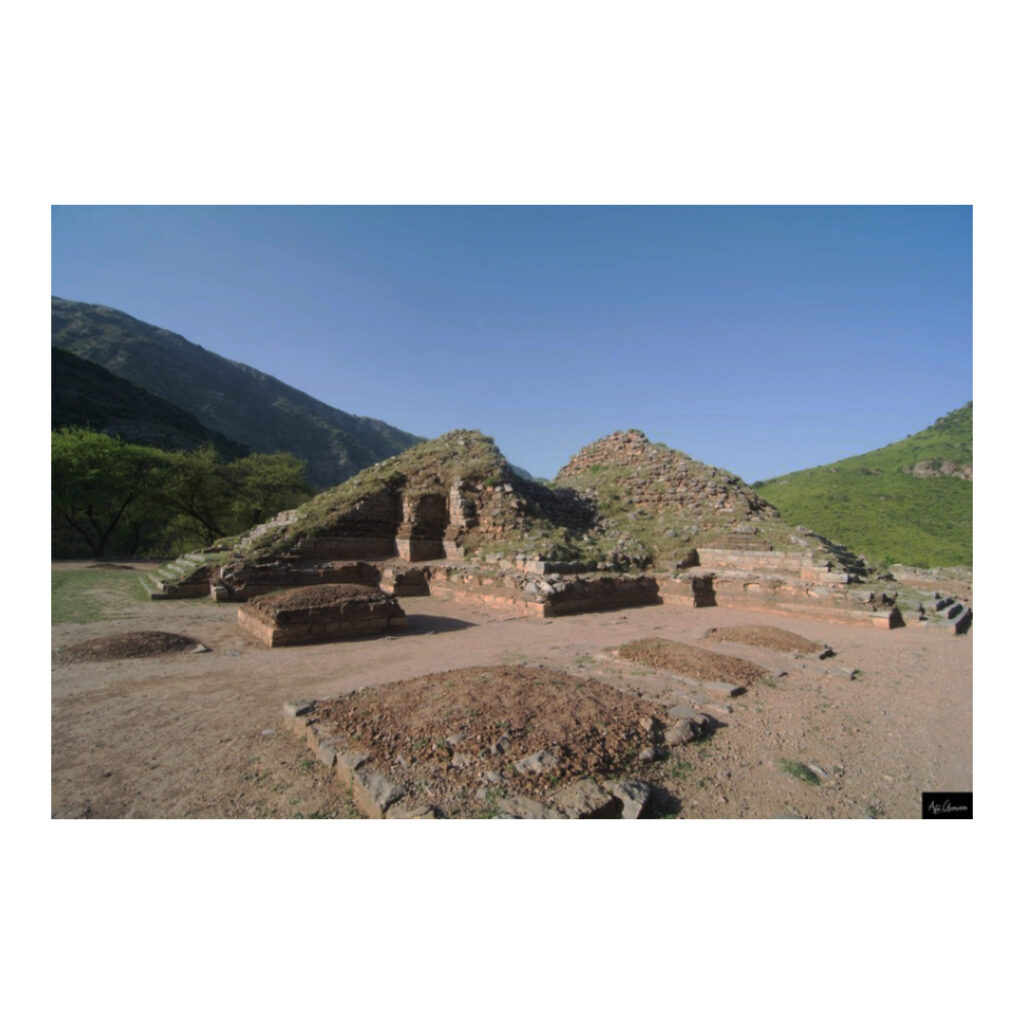Bhamala Stupa, A masterpiece of Buddhist Architecture

Bhamala Stupa, also known as the Bhamala Buddhist Complex, is an ancient archaeological site located in the Haripur District of Khyber Pakhtunkhwa province in Pakistan. This historical site holds significant importance as it offers a glimpse into the rich Buddhist heritage of the region. It is located on the bank of Haro River.
The main attraction of the Bhamala Buddhist Complex is the Bhamala Stupa, a large domed structure that once served as a monumental Buddhist religious site. Stupas are sacred monuments in Buddhism and are typically built to house relics of the Buddha or important Buddhist figures. The Bhamala Stupa is believed to date back to the 4th or 5th century CE, making it an ancient relic of great historical and cultural value. Its most special thing is a statue of Buddha which is considered 1700 years old.
Archaeological excavations at the Bhamala Stupa site have revealed a treasure trove of artifacts, sculptures, and relics. One of the most notable discoveries was a casket made of soapstone that contained some bone fragments, which are believed to be relics of the Buddha himself. This finding has further cemented the significance of Bhamala as a revered pilgrimage site for Buddhists.

Apart from the main stupa, the Bhamala Buddhist Complex also comprises several other structures, including a monastery, stupas, and a votive stupa. These additional structures indicate that the site was once a bustling center for Buddhist worship, meditation, and learning.
Over the centuries, the Bhamala Stupa and its surroundings suffered from natural wear and tear, as well as human-induced damage. Earthquakes and other environmental factors took their toll on the ancient structures, and at times, the site was neglected and faced the threat of encroachment. However, the site’s cultural significance and historical value were recognized, leading to efforts to preserve and protect it.
Conservation efforts by the Pakistani authorities, in collaboration with international organizations and experts, have been ongoing to safeguard the Bhamala Stupa and the entire Buddhist Complex. The restoration work has helped stabilize and preserve the structures, making it possible for locals and tourists to visit and appreciate this historical gem.
Bhamala Stupa stands as a testament to the rich and diverse history of the Indian subcontinent, showcasing the once-thriving Buddhist culture that flourished in the region. It not only attracts Buddhist pilgrims from various parts of the world but also serves as a site of historical and archaeological interest for researchers, history enthusiasts, and travelers alike. As the site continues to be explored and conserved, it will undoubtedly offer further insights into the ancient civilizations that once thrived in the region and their contributions to world history.




